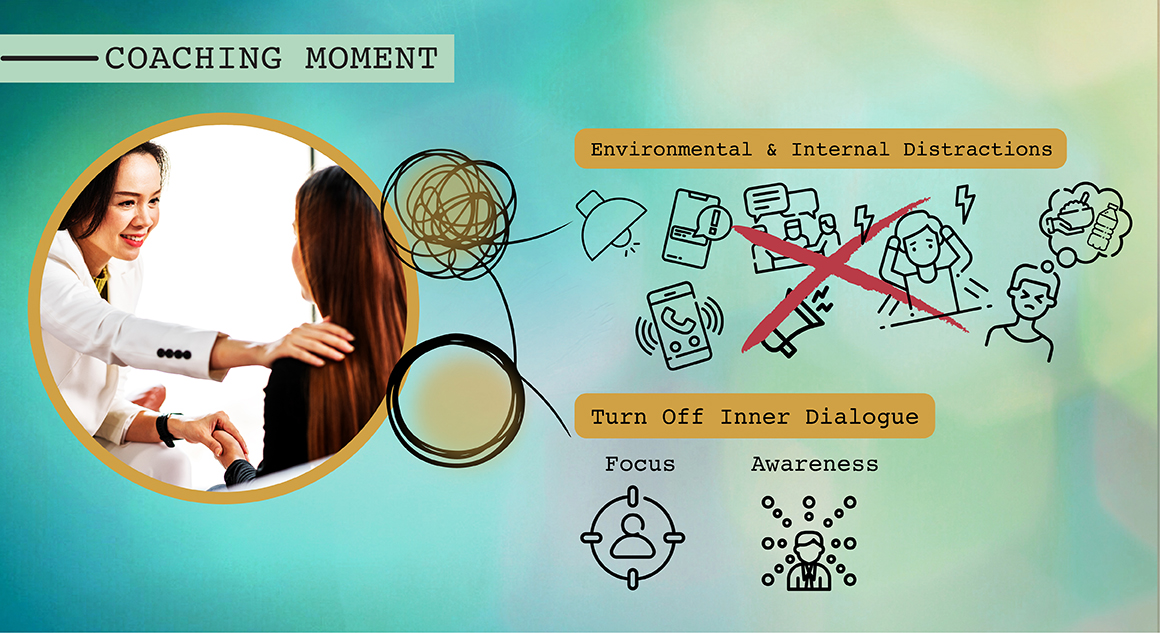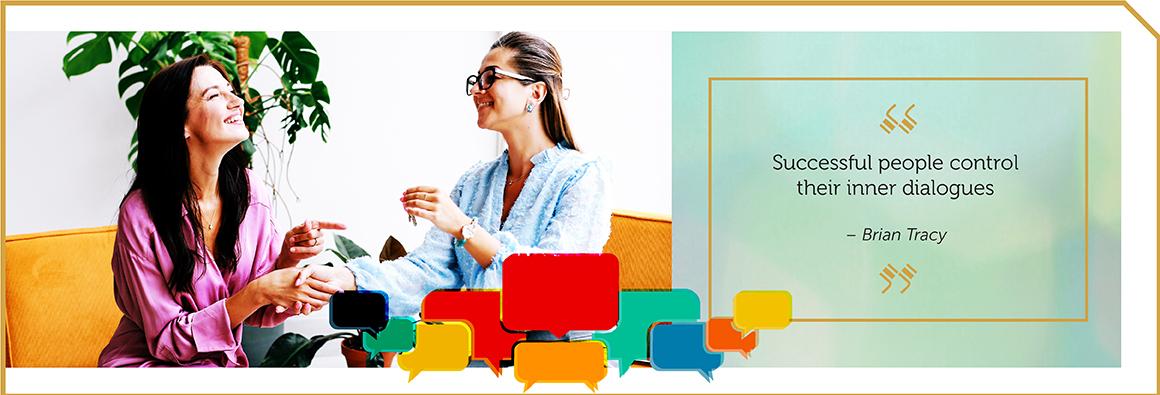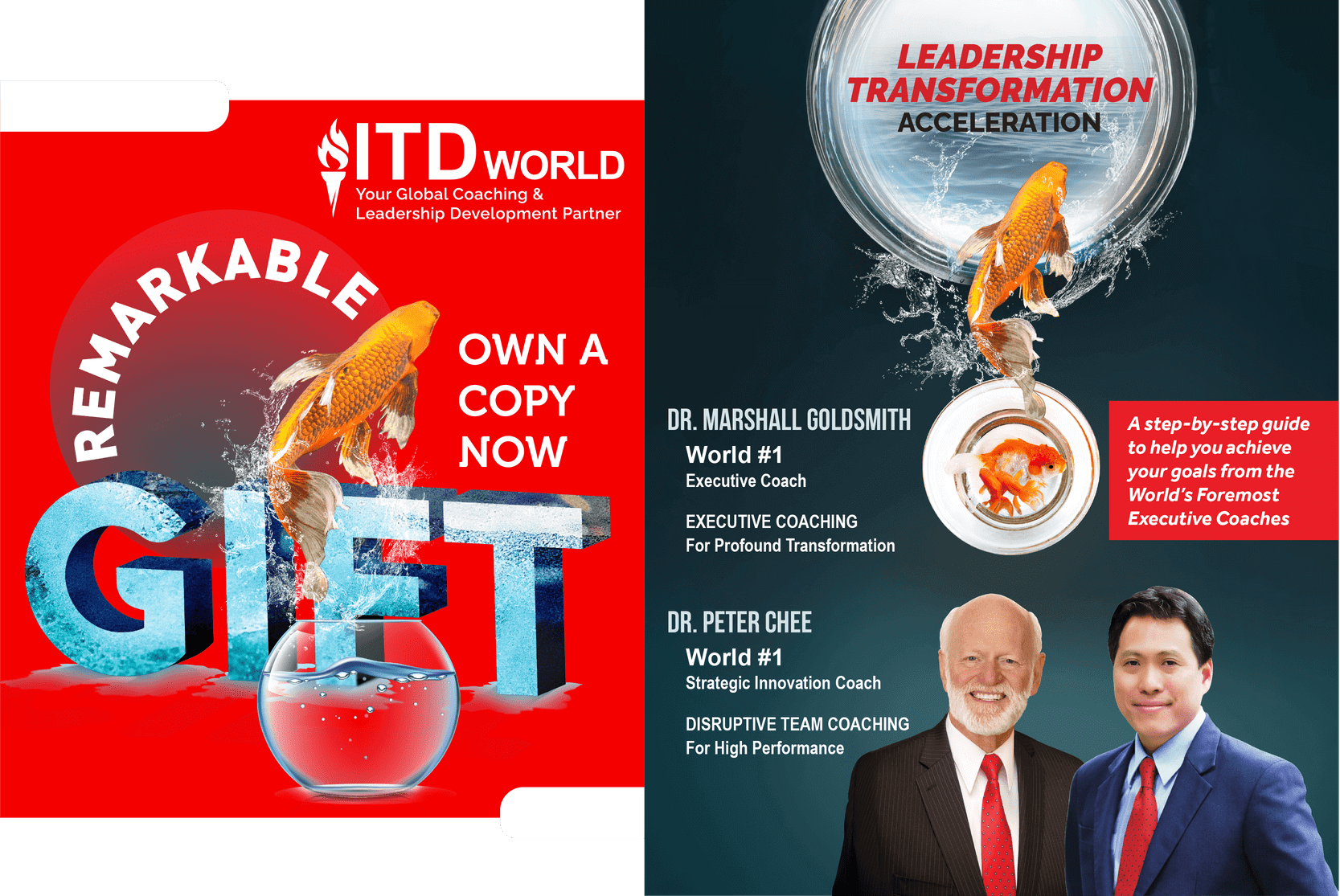


By Dr Peter Chee and Dr Jack Canfield
One of the greatest gifts you can give to someone is to be present. In order to listen to someone, you have to be present. Being present means being focused on the other person’s agenda, available to interact, able to show that you understand the situation, challenges, resistance, and fears. Being present is being in the moment and to enjoy that moment.
During the coaching conversation, the coach must be present not just physically but mentally and emotionally as well. Your mind cannot be somewhere else while the body is present. Practicing this means paying attention and being fully available to the person being coached.
When you are fully present, you constantly scan the environment so you are fully aware of the emotional state and facial expressions of others. A coach shows care when they give their full attention because quality time is not measured by the amount of time spent. Quality time is measured by the degree to which the attention is given to spoken and unspoken words.
During the session, coaches would want to avoid thinking of what solutions are needed for the client’s problem and what question to ask next. Instead, acknowledge what has been said and let the next question flow naturally. Do not be afraid of pauses as this gives you the breathing space for you and your coachee to think.
As a coach, you would want to ensure your presence is present by minimizing or removing any distractions to be present in the “coaching moment”. This can be done my systematically taking away environmental distractions which include noise, people chatting in the background, message alerts, phone ringing or vibrating, room temperature, or the room lighting to name a few.
Internal distractions can also detract from the “coaching moment” you want to create with your coachee. This includes your physical state of hunger, thirst, tired, or stressed. Take the time to address these issues so you can be fully present.
Another internal distraction which can hamper the coaching conversation is the inner dialogue which is the continuous conversation going on in our heads. This can be playbacks from the past, judgements about people, any ongoing situations, or future plans. The dialogue can be positive or negative and acts as a filter on what we are listening to from others. If left unchecked, it can lead to bias.
Effective coaches control or even turn off this inner dialogue when conversing with their coachees as they strive to give their best. You can do so by focusing closely on what the client is saying or not saying. Keep a high awareness on your thoughts. If your thoughts have drifted away, quickly bring them back to the present and enhance your efforts to remain present.

Our presence is a present to the people we coach
– Peter Chee and Serely Alcaraz



EUREKA VIDEO
TRANSFORMATIONAL COACHING QUESTIONS
LATEST HAPPENINGS
The Certified Chief Master Coach (CCMC) elevates your leadership and coaching to enable greater performance for yourself and your team.
Learn more about this profound program and see for yourself how other leaders have benefitted.
ITD World also wishes the graduating class of May 2022 from the Certified Chief Master Coach (CCMC) program the very best! Congratulations to all who have taken this step to greatly unleash human potential for the betterment of the world through coaching.
FURTHER RESOURCES



